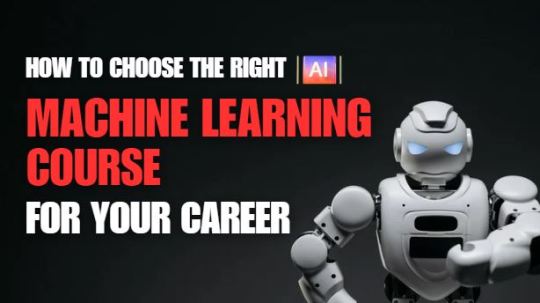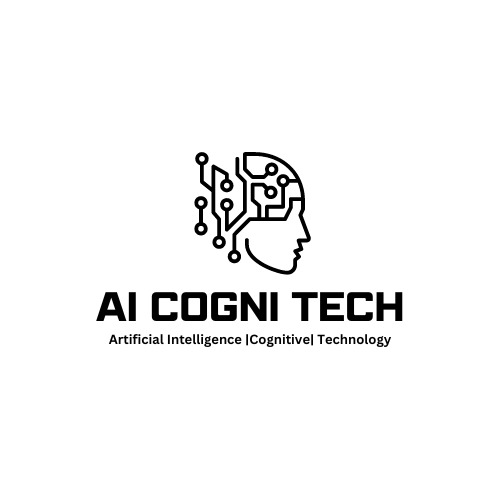#unsupervised machine learning
Explore tagged Tumblr posts
Text
Unsupervised learning is a branch of artificial intelligence that involves the training of an algorithm on unstructured data. Unstructured data is defined as data that does not have any predefined categorizations or labels.
#Unsupervised Learning Market#Unsupervised Learning Market size#Unsupervised Learning#Unsupervised machine Learning
0 notes
Text
Hyperparameter tuning in machine learning
The performance of a machine learning model in the dynamic world of artificial intelligence is crucial, we have various algorithms for finding a solution to a business problem. Some algorithms like linear regression , logistic regression have parameters whose values are fixed so we have to use those models without any modifications for training a model but there are some algorithms out there where the values of parameters are not fixed.
Here's a complete guide to Hyperparameter tuning in machine learning in Python!
#datascience #dataanalytics #dataanalysis #statistics #machinelearning #python #deeplearning #supervisedlearning #unsupervisedlearning
#machine learning#data analysis#data science#artificial intelligence#data analytics#deep learning#python#statistics#unsupervised learning#feature selection
3 notes
·
View notes
Text
Transformations in Machine Translation
The field of machine translation has undergone remarkable transformations since its inception, evolving from basic rule-based systems to today’s cutting-edge neural networks. Early machine translation faced significant challenges in handling the complex nature of language, particularly the absence of perfect word-to-word equivalence between different languages and the vast variations in sentence…
#English to Korean translation#German to Korean translation#Korean to english translation#Machine translation#Neural Machine Translation#Recurrent Neural Networks#Rule-based systems#Statistical Machine Translation#Unsupervised learning
0 notes
Text
How to Choose the Right Machine Learning Course for Your Career

As the demand for machine learning professionals continues to surge, choosing the right machine learning course has become crucial for anyone looking to build a successful career in this field. With countless options available, from free online courses to intensive boot camps and advanced degrees, making the right choice can be overwhelming.
#machine learning course#data scientist#AI engineer#machine learning researcher#eginner machine learning course#advanced machine learning course#Python programming#data analysis#machine learning curriculum#supervised learning#unsupervised learning#deep learning#natural language processing#reinforcement learning#online machine learning course#in-person machine learning course#flexible learning#machine learning certification#Coursera machine learning#edX machine learning#Udacity machine learning#machine learning instructor#course reviews#student testimonials#career support#job placement#networking opportunities#alumni network#machine learning bootcamp#degree program
0 notes
Text
Supervised Learning Vs Unsupervised Learning in Machine Learning
Summary: Supervised learning uses labeled data for predictive tasks, while unsupervised learning explores patterns in unlabeled data. Both methods have unique strengths and applications, making them essential in various machine learning scenarios.

Introduction
Machine learning is a branch of artificial intelligence that focuses on building systems capable of learning from data. In this blog, we explore two fundamental types: supervised learning and unsupervised learning. Understanding the differences between these approaches is crucial for selecting the right method for various applications.
Supervised learning vs unsupervised learning involves contrasting their use of labeled data and the types of problems they solve. This blog aims to provide a clear comparison, highlight their advantages and disadvantages, and guide you in choosing the appropriate technique for your specific needs.
What is Supervised Learning?
Supervised learning is a machine learning approach where a model is trained on labeled data. In this context, labeled data means that each training example comes with an input-output pair.
The model learns to map inputs to the correct outputs based on this training. The goal of supervised learning is to enable the model to make accurate predictions or classifications on new, unseen data.
Key Characteristics and Features
Supervised learning has several defining characteristics:
Labeled Data: The model is trained using data that includes both the input features and the corresponding output labels.
Training Process: The algorithm iteratively adjusts its parameters to minimize the difference between its predictions and the actual labels.
Predictive Accuracy: The success of a supervised learning model is measured by its ability to predict the correct label for new, unseen data.
Types of Supervised Learning Algorithms
There are two primary types of supervised learning algorithms:
Regression: This type of algorithm is used when the output is a continuous value. For example, predicting house prices based on features like location, size, and age. Common algorithms include linear regression, decision trees, and support vector regression.
Classification: Classification algorithms are used when the output is a discrete label. These algorithms are designed to categorize data into predefined classes. For instance, spam detection in emails, where the output is either "spam" or "not spam." Popular classification algorithms include logistic regression, k-nearest neighbors, and support vector machines.
Examples of Supervised Learning Applications
Supervised learning is widely used in various fields:
Image Recognition: Identifying objects or people in images, such as facial recognition systems.
Natural Language Processing (NLP): Sentiment analysis, where the model classifies the sentiment of text as positive, negative, or neutral.
Medical Diagnosis: Predicting diseases based on patient data, like classifying whether a tumor is malignant or benign.
Supervised learning is essential for tasks that require accurate predictions or classifications, making it a cornerstone of many machine learning applications.
What is Unsupervised Learning?
Unsupervised learning is a type of machine learning where the algorithm learns patterns from unlabelled data. Unlike supervised learning, there is no target or outcome variable to guide the learning process. Instead, the algorithm identifies underlying structures within the data, allowing it to make sense of the data's hidden patterns and relationships without prior knowledge.
Key Characteristics and Features
Unsupervised learning is characterized by its ability to work with unlabelled data, making it valuable in scenarios where labeling data is impractical or expensive. The primary goal is to explore the data and discover patterns, groupings, or associations.
Unsupervised learning can handle a wide variety of data types and is often used for exploratory data analysis. It helps in reducing data dimensionality and improving data visualization, making complex datasets easier to understand and analyze.
Types of Unsupervised Learning Algorithms
Clustering: Clustering algorithms group similar data points together based on their features. Popular clustering techniques include K-means, hierarchical clustering, and DBSCAN. These methods are used to identify natural groupings in data, such as customer segments in marketing.
Association: Association algorithms find rules that describe relationships between variables in large datasets. The most well-known association algorithm is the Apriori algorithm, often used for market basket analysis to discover patterns in consumer purchase behavior.
Dimensionality Reduction: Techniques like Principal Component Analysis (PCA) and t-Distributed Stochastic Neighbor Embedding (t-SNE) reduce the number of features in a dataset while retaining its essential information. This helps in simplifying models and reducing computational costs.
Examples of Unsupervised Learning Applications
Unsupervised learning is widely used in various fields. In marketing, it segments customers based on purchasing behavior, allowing personalized marketing strategies. In biology, it helps in clustering genes with similar expression patterns, aiding in the understanding of genetic functions.
Additionally, unsupervised learning is used in anomaly detection, where it identifies unusual patterns in data that could indicate fraud or errors.
This approach's flexibility and exploratory nature make unsupervised learning a powerful tool in data science and machine learning.
Advantages and Disadvantages

Understanding the strengths and weaknesses of both supervised and unsupervised learning is crucial for selecting the right approach for a given task. Each method offers unique benefits and challenges, making them suitable for different types of data and objectives.
Supervised Learning
Pros: Supervised learning offers high accuracy and interpretability, making it a preferred choice for many applications. It involves training a model using labeled data, where the desired output is known. This enables the model to learn the mapping from input to output, which is crucial for tasks like classification and regression.
The interpretability of supervised models, especially simpler ones like decision trees, allows for better understanding and trust in the results. Additionally, supervised learning models can be highly efficient, especially when dealing with structured data and clearly defined outcomes.
Cons: One significant drawback of supervised learning is the requirement for labeled data. Gathering and labeling data can be time-consuming and expensive, especially for large datasets.
Moreover, supervised models are prone to overfitting, where the model performs well on training data but fails to generalize to new, unseen data. This occurs when the model becomes too complex and starts learning noise or irrelevant patterns in the training data. Overfitting can lead to poor model performance and reduced predictive accuracy.
Unsupervised Learning
Pros: Unsupervised learning does not require labeled data, making it a valuable tool for exploratory data analysis. It is particularly useful in scenarios where the goal is to discover hidden patterns or groupings within data, such as clustering similar items or identifying associations.
This approach can reveal insights that may not be apparent through supervised learning methods. Unsupervised learning is often used in market segmentation, customer profiling, and anomaly detection.
Cons: However, unsupervised learning typically offers less accuracy compared to supervised learning, as there is no guidance from labeled data. Evaluating the results of unsupervised learning can also be challenging, as there is no clear metric to measure the quality of the output.
The lack of labeled data means that interpreting the results requires more effort and domain expertise, making it difficult to assess the effectiveness of the model.
Frequently Asked Questions
What is the main difference between supervised learning and unsupervised learning?
Supervised learning uses labeled data to train models, allowing them to predict outcomes based on input data. Unsupervised learning, on the other hand, works with unlabeled data to discover patterns and relationships without predefined outputs.
Which is better for clustering tasks: supervised or unsupervised learning?
Unsupervised learning is better suited for clustering tasks because it can identify and group similar data points without predefined labels. Techniques like K-means and hierarchical clustering are commonly used for such purposes.
Can supervised learning be used for anomaly detection?
Yes, supervised learning can be used for anomaly detection, particularly when labeled data is available. However, unsupervised learning is often preferred in cases where anomalies are not predefined, allowing the model to identify unusual patterns autonomously.
Conclusion
Supervised learning and unsupervised learning are fundamental approaches in machine learning, each with distinct advantages and limitations. Supervised learning excels in predictive accuracy with labeled data, making it ideal for tasks like classification and regression.
Unsupervised learning, meanwhile, uncovers hidden patterns in unlabeled data, offering valuable insights in clustering and association tasks. Choosing the right method depends on the nature of the data and the specific objectives.
#Supervised Learning Vs Unsupervised Learning in Machine Learning#Supervised Learning Vs Unsupervised Learning#Supervised Learning#Unsupervised Learning#Machine Learning#ML#AI#Artificial Intelligence
0 notes
Text
Curso de Inteligência Artificial para todos - Aula 1
Curso de Inteligência Artificial para todos – Aula 1. Diogo Cortiz – 2020 23 mar Este primeiro vídeo é para discutir o panorama de IA e as principais abordagens existentes. Vou apresentar a história da inteligência artificial e a sopa de letrinhas que confunde muita gente: ia, machine learning, deep learning. Também explico as principais abordagens de aprendizado e treinamento: aprendizado…
#aprendizado não supervisionado (unsupervised learning) aprendizado por reforço (reinforcement learning)#aprendizado supervisionado (supervised learning)#Curso de Inteligência Artificial para todos Aula 1#deep learning#Diogo Cortiz#história inteligência artificial#machine learning#primeiro vídeo panorama IA#principais abordagens aprendizado treinamento#principais abordagens existentes#sopa de letrinhas#YouTube cursos
0 notes
Text
Machine Learning: Exploring the Main Components and Functions of this Powerful AI Technique
Delve into the sector of Machine Learning as we discover its fundamental additives and functions. Discover the intricacies of supervised learning, unsupervised getting to know, and reinforcement gaining knowledge of, and understand how Machine Learning is revolutionizing industries and using AI advancements.
Machine Learning

#Machine Learning#predominant components of Machine Learning#Machine Learning capabilities#supervised learning#unsupervised studying#reinforcement learning#AI packages.
0 notes
Text
some small headcanons I got for the forest god au by @llamagoddessofficial
Please note that all the things stated down there are NOT canon, but headcanons I made up as I aggressively scourged down every bit of information I found about this au, thank you very much :)
also I’ll be heavily focusing on my favorite boy Skull (I’ll just call him Horror for now because I can handle it better) here, because why not, I love him
Sans is not opposed of letting humans do their thing. If they wander his territory, they wander his territory. He’s even turned humans fae if they showed devotion to him. Some have started a cult about him, and he finds it amusing enough to let it continue. And hey, they even protect his forest FOR HIM, so all he really has to do is care for the fae and animals, not if trees get cut down or rivers get dammed. He can just sit back and relax, and have the enjoyment of humans running around for him. He doesn’t consider it to be selfish- heck, he never showed himself to them, he didn’t start the cult. That’s on them.
He viewed the cult as… family, to some degree. After all, he turned some into his kind. After the forest of a fellow deity was lost t the humans and then the deities wrath, he watched the cult fall apart. They left his forest, leaving him to feel abandoned by them. He TRUSTED them. He never showed himself to the most of them, but he still LIKED them. They were like the most of family he ever had. And now they were gone.
Red likes humans. We all know that. But over the centuries, as they evolved, he watched them closely. So closely, that when you are fortunate enough to enter his core domain, you are faced with ancient human machines. Old pictures of random people in surprisingly good health for being tucked away in a tree in the middle of a forest. If you want to get an item of yours back after loosing it in the forest, you must trade it with him (dipping into the fae aspect here, hehe). He allows humans to stay in his domain, at least at its edges. But those that live there whisper about how many things go missing regularly. That bird that grasped your hunting knife as you left it unsupervised? Sent by the local deity. The fox pulling a bag of different tools? Reds personal thief. The deer eyeing the self made pouch of multiple layers- you get the idea.
Horror wasn’t always a hulking multilegged creature that resembles beasts. Before his rage took over, he was a humanoid deity, like the others. He allowed humans to wander through his territory and hunt and forage to a certain extent, and those that exhausted their stay just wouldn’t find any more. No more berries on the sides of the path, no more deer trails to follow. Similar to Red, he finds humans intriguing, but in a slightly different way. While Red wants to know all about the human race, Horror is content with letting them into his forest without having them fear for their safety. He allows them to hunt and forage, but no one dares to set up a permanent home there. A camp for the night, sure, but anything that indicates a longer stay than a full moon cycle will be left without food or other resources soon enough, alongside great rain and extreme temperatures that only worsen the longer the human stay.
Anyone who dares exhaust their stay even AFTER he told his animals to evade the human, made the plants temporarily close their flowers when the human was around… they learn to never upset a god the hard way. Every step they take makes water seep into their boots that never dry again. Every plant they decide to pick, it either wilts before they can consume it, or it makes them sick. The animals they slaughter put up a vicious fight. Arrows don’t harm the animals anymore. The meat turns bad in a heartbeat, or it infects the hunter with diseases or parasites. Horror allows humans to redeem themselves if they move out when he tells them, but if you decide to exhaust his hospitality even after his warning signs? You have been cast out for your life.
Horror liked his fae-underlings. He allowed them to toy with humans, but only to a certain degree. He refrained from turning humans to fae, because they could get the wrong idea. But there are stories about a certain human who was granted a special connection to his forest, and his forest alone.
154 notes
·
View notes
Note
I study comp sci at uni. The other day, my machine learning prof was going on about some unsupervised learning jargon. Basically bro was bringing up reward systems and what not. I was like heh Ultrakill moment. And then he suddenly brought up an equation with variables V1 and V2. My jaw dropped, and it was such a lonely feeling knowing no one else in that whole lecture of 200 was gonna know the reference.
-
31 notes
·
View notes
Text
Time period post: trust and faith

The title is a bit misleading for this post as it is not necessarily trust for everything/everyone but more an inherent trust in community and neighborhood. This is a time when people would leave their front doors wide open and small talk wasn’t a chore. Now, I know now days you can’t exactly leave your door open but I can’t help but feel we’ve truly lost when smiling and talking to strangers is compared to “emotional labor” you know? This post is about a trust that’s become lost in everyday life, social nets and a sense of safety.
Basically life pre serial killers lol
Contradiction—
While there was greater faith in society that is not a monolith or a universal truth, there was simultaneously less and more fear. Something to keep in mind is this era is coming out of McCarthism, the Cold War, the height of civil rights - still racism and xenophobia, homophobia- the beginnings of the gay rights movements. There were still broader anxieties- especially as so much change and progress was happening it leads to a lot of worry and anxieties! Some rational others not. A lot to unlearn/unpack and learn!
Urban sprawl is another cause for anxiety, and contradictory to this faith in society, while it opened a lot of opportunities for home ownership to those who’d never had the opportunity prior… it became a never ending machine chipping away at the countryside. Freeways bulldoze communities, some neighborhoods are blocked racially, some are so large you start to loose it a little. Now this is by no means a 1960s explosives it started in the 40s but the fear and sprawl of it all starts to take head.
The rise of the middle class comes with the bad alongside its many goods. Like the rise of consumerism, again largely post ww2
There was so much fear but at the same time a more … relaxed? Society for lack of a better word, it’ll make sense once I get into it.

Streetlights and latchkeys-
There’s a lot to be said about knowing and trusting your neighborhood and community, being able to have your kids play a few blocks away without much worry and leaving your door open. Now part of this, I will concede was a lot of parents just not knowing and hands off parenting. Push your kids out “don’t come back until or be sure to by back when the streetlights come on”. Not always neglectful but different from the helicopter preferences of today.
I’m not exaggerating either, the storm door would be closed but if someone was home usually the front or back door would be open. For friends, family, deliveries etc- you’d yell in first of course but then be welcomed on in. There was always serial killers but they wouldn’t become a huge fear until the absolute boom of them in the 70s-80s.
Alongside faith there was a lot less rules/regulations/laws garnering certain behaviors. You could send your kid into the store with a note to buy things such as booze or cigarettes! Sometimes just a few regular groceries if your kids out and your busy (my mom talks about running into a store to get cigarettes for her mom a lot). People trusted the note, parents trusted their kids to get what was asked and come back home right away. It was much more common to see kids unsupervised and completely fine, walking home safely - it was normal!
Latchkey kid: a child who is at home without adult supervision for some part of the day, especially after school until a parent returns from work.
8+ , young but older enough where the child is responsible/capable enough to get home and be able to care for themselves. In this I mean they’re at least able to make a sandwich and keep themselves entertained, not pay taxes or anything. The term and the idea of it took off in regard to teenagers in ww2 but they’ve been around for ages as - again childhood as we understand it post child labor is still a pretty new thing.
Latchkey kids typically were families who couldn’t afford daycare/child care facilities or had any nearby family to watch the kids or who could afford to watch them themselves. Sometimes a neighbor would be the there to call/check on them but not a constant watch.
BBQ and casserole-
Something that kept communities close/ knowing each other were regular get togethers. There were town events and social halls but also the classic neighborhood BBQ or block party! Dances (both adult and teen) when that was huge- different from clubbing and clubbing was also different.


It’s a trope now but bringing casseroles to a friend or neighbor who lost someone, being updated on their lives and there for them. Local clubs for just about anything! Hosting!
Hosting was huge amongst upper class and the ever expanding middle class. All sorts of parties and events, BBQ’s included. Tupperware parties were another big thing, or Avon calls— women’s get togethers mainly to sell product/have product sold to them (think MLM but more reputable)
Cocktail parties! Snacks and a big jug of a type of cocktail and adults hanging out. Not always friends a lot of the time men from work, important or otherwise.

This isn’t to say that clubs, parties and community events aren’t a thing anymore but more it was much more prominent than I’ve experienced/seen it today. That and of course it’s a while different era certain aspects were different.
It was a lot easier to have much more faith in society (and trust in neighbors) when it was more common to actually take the time to get to know the people around you. When there wasn’t 24/7 news cycles of fear or a million ways to get constant new info- when you got it through good old fashioned local gossip. I’ve talked about Locality before in some of my other posts!
#really can be summed up by life before serial killers and child ???? stuff#the outsiders#outsiders#outsiders meta#time period post#time period post : trust#1960s#writing help
37 notes
·
View notes
Text
Tic Tac Toe Game In Python
This is my first small Python project where I built a tac-tac-toe game in Python, we have played a lot in small classes while sitting at the last bench some of us have played at the first bench too. It is a very famous game that we are building today after the completion of this project we can play with our friends with the project we have made.
Here's a complete guide to the Tic-tac-toe game in Python!
#datascience #dataanalytics #dataanalysis #statistics #machinelearning #python #deeplearning #supervisedlearning #unsupervisedlearning
#machine learning#data analysis#data science#artificial intelligence#data analytics#deep learning#python#statistics#unsupervised learning#feature selection
0 notes
Text
The Trainee’s workplace authenticity

One of my favorite things about workplace TV shows is when the characters actually do work. AND when the details of such work are not only relatively accurate, but also essential to how the characters relate to themselves, the world and each other. So far, "The Trainee" is giving that to me in the first two episodes.
Having interned/been an assistant at a TV production company and later moving to entertainment journalism and managing interns/junior writers there, I can appreciate both Ryan's and Jane's POVs. Here's what I liked so far:
Good Pick's pink tube slide and movie theater seats in the lobby - A lot of these entertainment-adjacent companies take a cue from Silicon Valley and have this frivolous, frat-boy design aesthetic -- bean bag chairs, foosball tables, etc. I worked in an office that had a ping-pong table. The idea is to make it fun enough that people want to stay in the office and work longer, which isn't really all that great. You stop seeing that fun stuff after a while and just want to get home. That said, I'd love to work in a company with a fire pole in it, but that would be too much of a liability.
Ryan's fluke hiring - Baimon totally hearing what he wants to hear from Ryan in that sham interview is hilarious but sadly not all that unusual. What sucks is that this is unfair to the manager who then must work with the unqualified person, and unfair to that person hired also, who isn't the best fit for the position. I've been the person saddled by the unfortunate hire and have had to make do … and sometimes you can figure it out, but often you're left doing extra work to make up for their deficits. If it's just an intern, no problem -- they'll be gone in a few months. I felt Jane's pain!
Ryan's uncertainty & silence - That said, Ryan clearly wants to do well but is out of his depth since this was not even what he was learning in school. I remember the first day as a journalist for a small company where I kind of was on my own, and nobody told me what to do. I was like, "WTF??" Part of you doesn't want to ask questions lest you expose your imposter identity, but you're also wondering just how long you can do nothing before someone notices.
The printer always breaks down -- always. You get pretty good at troubleshooting everything until resorting to calling a technician

Jane's prickly demeanor - The fact is that in any company, people who are competent can move up, but that doesn't automatically infuse them with good managerial skills. I think workshops, etc. are a must for anyone who gets promoted and suddenly have people reporting to them. Everyone can get frustrated when they're overwhelmed, so I do have some sympathy for Jane. He does have one skill that I think is essential to be a good manager: identifying and acknowledging the strengths of an employee. It really makes all the difference that he finally sees Ryan as an asset, not a hindrance.
Ryan's skills aren't that bad at all - As soon as Ryan tells his family that he's no help to anyone at work, he immediately shows five different ways how much he's relied on by his family. Yes, people who are competent, reliable and can anticipate needs (like how his sister needs to be reminded to charge the battery after using the camera) will be able to apply those skills to other situations and can go far. Ryan just needs to familiarize himself with the industry first in order to know how he can fill in the gaps. (I believe in being able to change careers and taking big pivots in life.)

The interns banding together - OMG I remember sometimes just being unsupervised while trying to get a project together, and there is a strange bond you have being the youngest and least experienced. And you do have the most stupid conversations.
Being one cog in a bigger machine - I really appreciate how they show all the different departments that have to come together to make one project work -- especially when last-minute changes need to be implemented or a persnickety client has opinions. You complain, you worry, you put in extra late hours and have to make 11th-hour fixes -- but it's so satisfying to see it all come together. Shit goes down, and you fix it.
Hiring extras - The hiring of extras at Good Pick was different from what I've experienced. I actually have been an extra, and what I'm used to is being part of a company or agency that has you in their database, and then you get picked or cast by that company and sent to your gig. But that's in Hollywood and for TV shows & movies. It's probably different for ad houses or in Thailand, but I did like how they showed that it is still a casting process. There are deliberate decisions made, and certain looks sought out. I thought it was hilarious that Ryan's first thought for hiring the salaryman was to get an uncle from the same restaurant as the auntie. If he had his way, everyone in that restaurant would be hired for some gig or another.

Ryan getting scammed by the extra - I was screaming at Ryan as soon as he offered to pay that scammer extra. Just … no, boy. You had to have known that was shady. BUT despite being duped, he was willing to think on his feet and try to solve a problem by being proactive, and that does happen. And so do mistakes. He just needs to calibrate his radar for what is OK. (I'm glad Jane saw that.) Ryan is lucky that it only cost him 1,000 baht for that lesson.
Extras must be on hand and wait - OK this is a scene in the preview for Episode 3, but I was so happy to see it: Extras in Hollywood actually cannot just spend 5 minutes or whatever to do their job, even if that's how much you see them onscreen. There's a ton of hurry up and wait on film sets, and so extras have to stay in Holding -- usually just a designated area with some chairs (sometimes you get tables) -- until you're needed. And production schedules never run on time, so it can be hours or even days. You're lucky if you're there long enough to get a meal, if the temperature is nice, if you're able to make friends with the others and if there's wifi. Sometimes you bring your own clothes for wardrobe based on what you're told, and sometimes the wardrobe department supplements your wardrobe with extra pieces to help complete a specific look. And yeah, you're not able to leave except for the bathroom, so Ryan definitely shouldn't have let that one extra wander off.
"Ryan After Work" - I like these post-credit sequences that give extra insights into the job. And while the first one was more instructional, explaining how the production house differed from an agency, the second was more about the cohort camaraderie (and hinting at Ryan's positive feelings toward Jane). I hope the romance aspect of the show doesn't overshadow the work specificity going forward!
79 notes
·
View notes
Text

AI model improves 4D STEM imaging for delicate materials
Researchers at Monash University have developed an artificial intelligence (AI) model that significantly improves the accuracy of four-dimensional scanning transmission electron microscopy (4D STEM) images. Called unsupervised deep denoising, this model could be a game-changer for studying materials that are easily damaged during imaging, like those used in batteries and solar cells. The research from Monash University's School of Physics and Astronomy, and the Monash Center of Electron Microscopy, presents a novel machine learning method for denoising large electron microscopy datasets. The study was published in npj Computational Materials. 4D STEM is a powerful tool that allows scientists to observe the atomic structure of materials in unprecedented detail.
Read more.
#Materials Science#Science#Materials Characterization#Computational materials science#Electron microscopy#Monash University
20 notes
·
View notes
Text
The Imperium Shelter
Adoption Poster: Angron
Name: Angron (he refuses to answer to anything else)
Species: Primarch
Breed: World Eater
Age: Approximately 3 weeks (though he's been through a lot, so his physiology has aged faster than average.)
Background: Found this one half-starved and raging in the pits of Nuceria. Covered in scars and barking about some nonsense. Took a lot of tranquilizers just to get him home in one piece, let me tell you! His previous "owners" clearly abused him. Poor boy. Or so I suppose…
Anyway, we rescued Angron and have been rehabilitating him through positive reinforcement techniques (definitely no mood-altering neurotransmitter adjustments used, no sir!). No wonder he developed some, er, behavior issues. But with plenty of tender loving care and training, I'm sure he'll learn to curb those homicidal tendencies. I mean, normal primarch tendencies!
Personality: Angry would be an understatement. This one is pure rage walking! Snarls and lunges at anything that moves, frothing at the mouth like some rabid animals. Absolutely no social skills, nearly took my hand off just for trying to give him a treat! I'd be wary leaving small children unsupervised around him, if you catch my drift. Let's just say he takes "aggressive" to a whole new level.
But give him a chance to warm up to you, earn his trust, and I'm sure he'll calm down! Sure, he may try to bite your face off at first, but I promise once he gets used to you he'll stop seeing every interaction as a threat or challenge. Might take a few… I mean, a lot of training sessions. But he means well deep down, the poor dear just wants to be loved!
Skills: Surprisingly dexterous for one so enraged. Could probably handle advanced weaponry or driving vehicles if provoked, so keep an eye on the car keys for sure. He already knows basic commands like "attack," "kill," "Skull for the Skull Throne!" No, strike that, I have no idea where that came from! He's a quick learner regardless. Also seems preternaturally strong, literally ripped the bars off his cage on the first night! And could wrestle a grown man to the ground, break his spine with a chomp. Of course, he would never do that!
In summary, Angron is one angry boy with a lot of special needs. Strict owner only, with experience handling extreme cases. Lots of patience, training and muzzles required. Adoption not recommended for the faint of heart! But who could resist that underbite… He just needs the right home to reach his true potential as a war machine! I mean, loyal primarch. Who's a good boy?!
Signed,
The Emperor
(Angron tries to bite his hand as he says that last part)
Comments from the employees:
M*******: I wouldn't recommend adopting Angron. He tried to bite my arm off during feeding time.
Big E: Nonsense Malcador, I'm sure you were provoking him. Angron just wants love, you'll do fine!
V*****: With respect sir, Angron is dangerously unstable. He killed three of our security measures. Even with sedatives he's too risky. Perhaps a more seasoned professional handler could manage him, if anyone can.
Big E: Quit scaring people Valdor, he was just playing! Weren't you boy? Angron foams rabidly See, happy as a clam. Next!
O*******: I understand the desire to rehabilitate him sir, but adopting out Angron could endanger lives. For the safety of the public and his own well-being, long term confinement and treatment seem best.
Big E: No Ollanius. Angron just wants someone to show him love. I'm sure with the right owner he'll come around, won't you boy? Angron bites his pants leg Down boy! So what do you say, is he yours?
121 notes
·
View notes
Text
AI, Machine Learning, Artificial Neural Networks.
This week we learnt about the above topic and my take home from it is that Artificial Intelligence (AI) enables machines to mimic human intelligence, driving innovations like speech recognition and recommendation systems. Machine Learning (ML), a subset of AI, allows computers to learn from data and improve over time.
Supervised vs. Unsupervised Learning are types of AI
Supervised Learning: Uses labeled data to train models for tasks like fraud detection and image recognition.
Unsupervised Learning: Finds patterns in unlabeled data, used for clustering and market analysis.
Artificial Neural Networks (ANNs)
ANNs mimic the human brain, processing data through interconnected layers
Input Layer: Receives raw data.
Hidden Layers: Extract features and process information.
Output Layer: Produces predictions.
Deep Learning, a subset of ML, uses deep ANNs for tasks like NLP and self-driving technology. As AI evolves, understanding these core concepts is key to leveraging its potential.
It was really quite enlightening.
10 notes
·
View notes